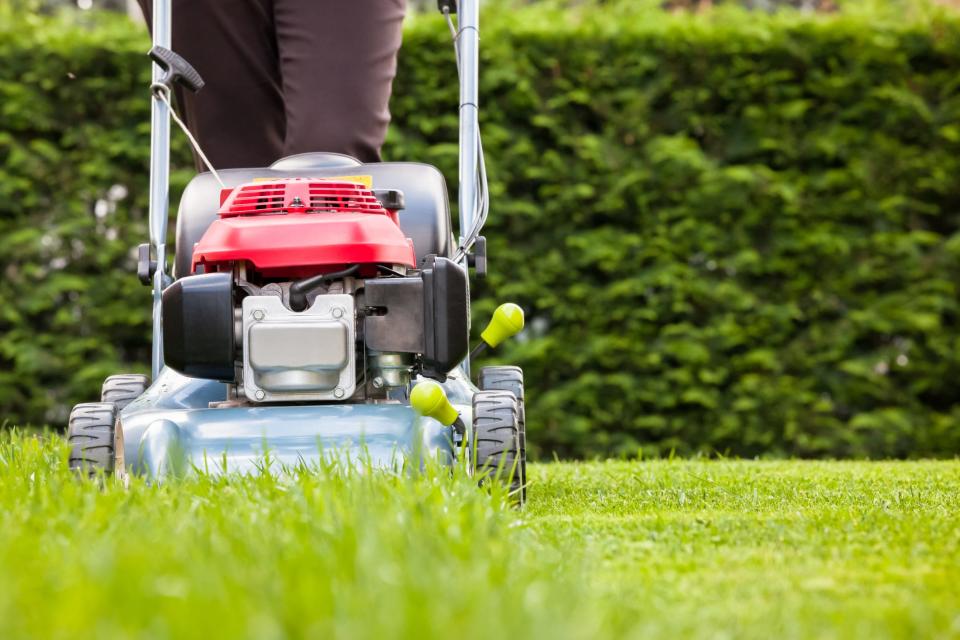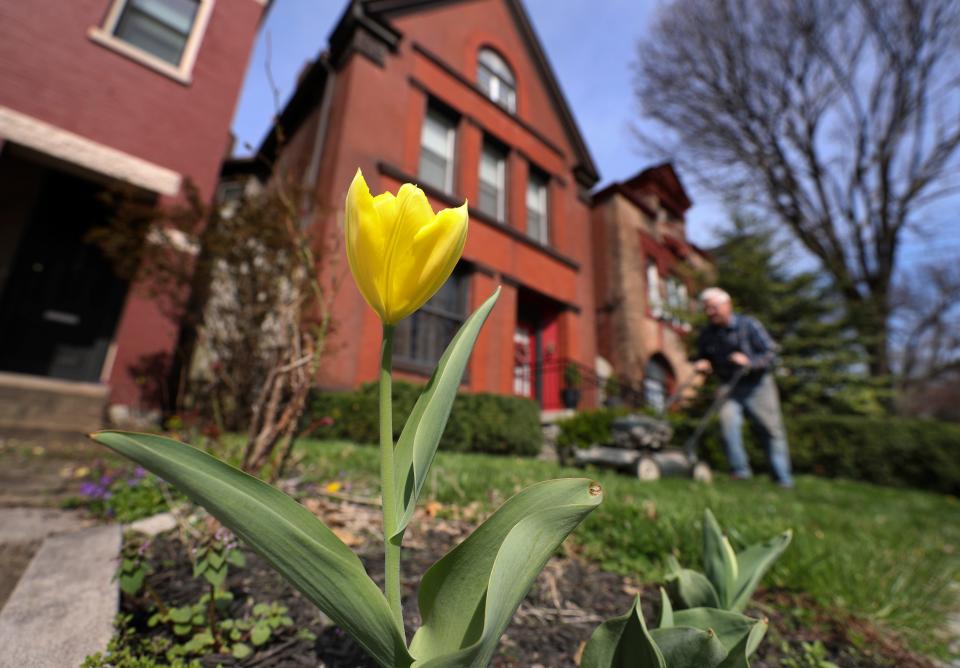When to plant grass seed, how to repair patchy spots and other lawn care tips you need
Why talk about lawns in early April? I mean the magnolias are flowering (at least what’s left of them after the week’s meteorological insults) the forsythia is in bloom and there’s a crowded lineup of others standing in the wings to add to the show. Seems lawns are the background for this season of color.
One of the reasons I might get some hate mail for devoting valuable April garden column space to the lowly lawn is that gardeners love to hate lawns. The all-knowing horticultural glitterati love to look down their collective nose at anyone who would dare to admire a lawn ... let alone actually have one.
Sometimes it seems that at garden gatherings the conversation is taken up with attendees outdoing one another with their lawn-minimalist pronouncements — “can you believe my neighbor ... he owns a lawnmower! Tsk, tsk, tsk...”
I’m not sure about the origin of the omnipresent disdain so many have for such a useful, and quite frankly low maintenance landscape feature (mowing the lawn takes less than one second per square foot per week!) We’re supposed to replace the lawn with sweeps of wildflowers, pollinator plants, and sprawling herbs that combine to make our kids smarter, our world kinder, and our future so very bright and shiny.
Well, here’s the thing about those “lawn alternatives" ... ever try to kick a soccer ball around with the kids on a lawn of wildflowers?
How about a knockdown, drag-out croquet match on a bunch of “Kentucky Colonel” mint? Just imagine lying down on a lawn, not of grass, but of Catnip!
Good luck with that.
You may like: When should you mulch? What about pruning? 5 things to do now for your spring garden
Just as the Lorax speaks for the trees, I stand for the grass!
Lawns are tremendously useful elements in the landscape. From function to aesthetics, traditional grass spans provide for active use of the lawn area and provide the always essential negative space in a designed landscape. Yes, we need to think about the birds and the bees. It’s good to plant diverse gardens to service a whole host of wildlife. That’s all very important, of course, but we count, too.
If a lawn works for you, there’s no need to let anyone make you feel bad about it.
So let’s get to the lawn. Nobody I know has a perfect lawn, if a perfect lawn is a sublimely emerald green with nether a thin or bare patch to be found. No matter the reason, if you want to improve the quality of your grassy lawn, this is a good time to do it, and here are a few tips and things to know.
How to diagnose a problem with your lawn
If you have bare spots or a thin lawn, the first step is to determine the cause. Little lawns and large dogs equal loads of lawn-related frustration. Dense shade and root competition from shade trees can leave little ecological space for grasses. Soil compaction is legendary for leading to bare spots and poor grass. Of course, there’s a seemingly endless list of insect and disease problems to consider as well.
The bottom line is that you can’t fix a problem unless you know the cause.
You may like: Mowing incorrectly, fertilizing too early and other ways you're ruining your lawn
What's the best time to plant grass seed?
Whether so-called cool-season or warm-season species, grass seed germinates better in spring (and fall) than in the heat of summer. The cool weather allows the germinating seed to get a root in the ground and start to produce leaf blades before the harsh, drying summer season. That’s why we’re talking about lawns at the start of spring in April.
Why you shouldn't use pre-emergent herbicides on your lawn

If you’ve already been out there treating the lawn with that trusty fertilizer/weed preventer, you’re in trouble. Those pre-emergent herbicides work by laying down a thin layer of product that kills young, newly emerging seedlings — both weed and grass seedlings. If you’ve already applied it, you’ll have to wait at least 90 days to start new seed in that area.
At that point, you’re best to wait until fall and skip the heat of the summer (see above!).
You may like: Ode to the Dandelion: Why this vilified weed is one of the adaptable garden plants
Should you lawn repair products on patchy or bald areas?

You see them all over the place these days. Both in garden centers and big-box stores, you’ll find products that have grass seed pelletized along with a bit of fertilizer and fiber mulch. And most of these products do work. The problem is, they are bloody expensive. When you look at the square footage a container covers, they’re about the same price as putting down Ipe flooring! (For those not in the know, Ipe, known as Brazilian Walnut flooring, is renowned for being one of the densest woods in the world.)
If you have bare spots that need a reseeding, you can do it at a low cost as follows: First, scratch up the top 1-inch of soil with a metal rake, second, spread seed at the package rate, third, lightly rake again to just barely cover the seed, and fourth, water in the seed.
After that, give it a spritz or two once or twice a day to keep it from drying out. Once the seed germinates and the grass is tall enough to mow, give it a shot of dilute fertilizer — maybe half the recommended rate.
And once it fills in and your lawn looks great, if anyone gives you a hard time about it, give me a call. I have a croquet mallet you can borrow!
Paul Cappiello is the executive director at Yew Dell Botanical Gardens, 6220 Old Lagrange Road, yewdellgardens.org.
This article originally appeared on Louisville Courier Journal: When to plant grass seed, how to repair patchy spots, lawn care tips

